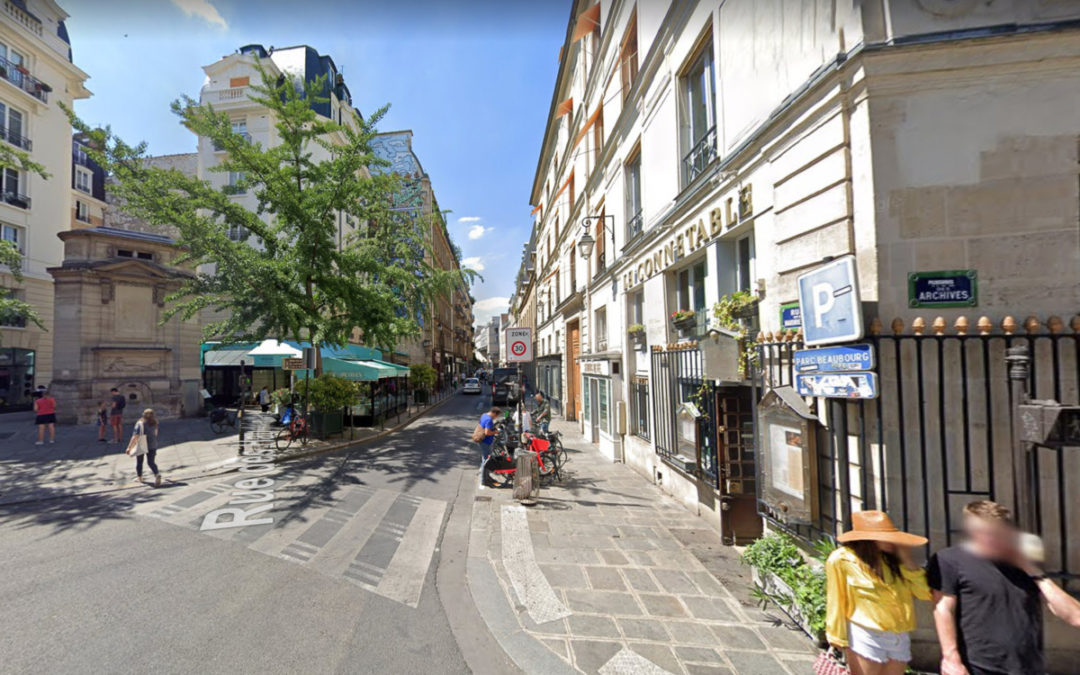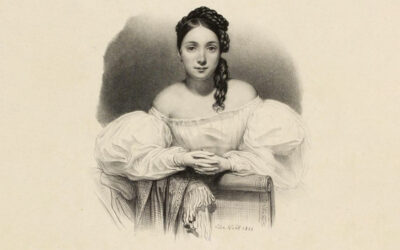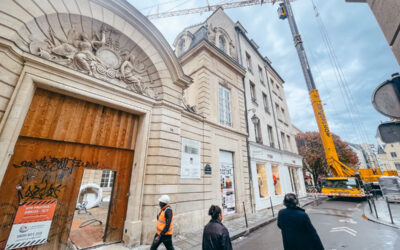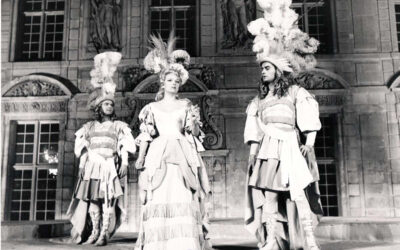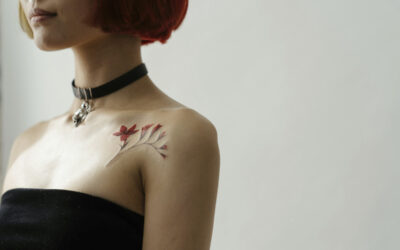Let us transport ourselves to the end of the nineteenth century. The driver of the cab that transported us dropped us off at the address we had given him. We pay him, he checks and declares: “That’s rue Michel”. This typical slang expression of his profession means “It counts” or more precisely “The count is good”. It is in fact a fine allusion to rue Michel-le-Comte, well known to these professionals, as well as the six thousand and some other streets of the capital.
Let's go back to May 2019. We find ourselves precisely at the corner of rue Beaubourg and this famous rue Michel-le-Comte, which we are not going to "do", but take. This is a new entrance to the Marais.

At 28 we follow the facade of the very beautiful Hallwyll hotel. Let's pull out Stark's oar to find out more.
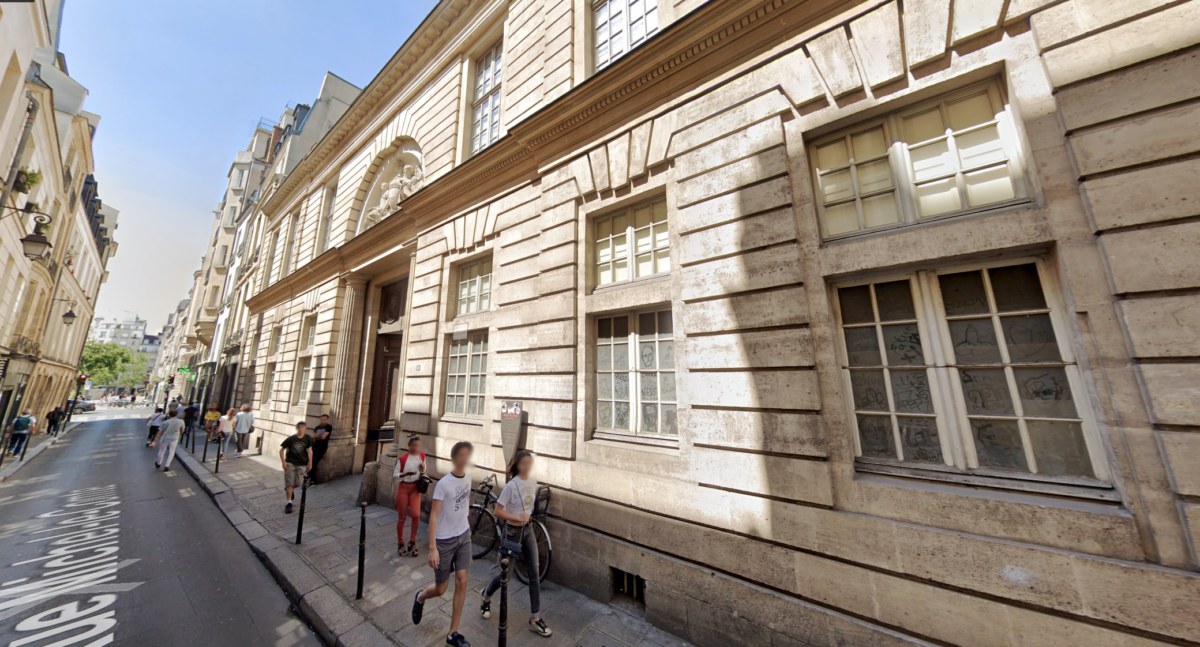
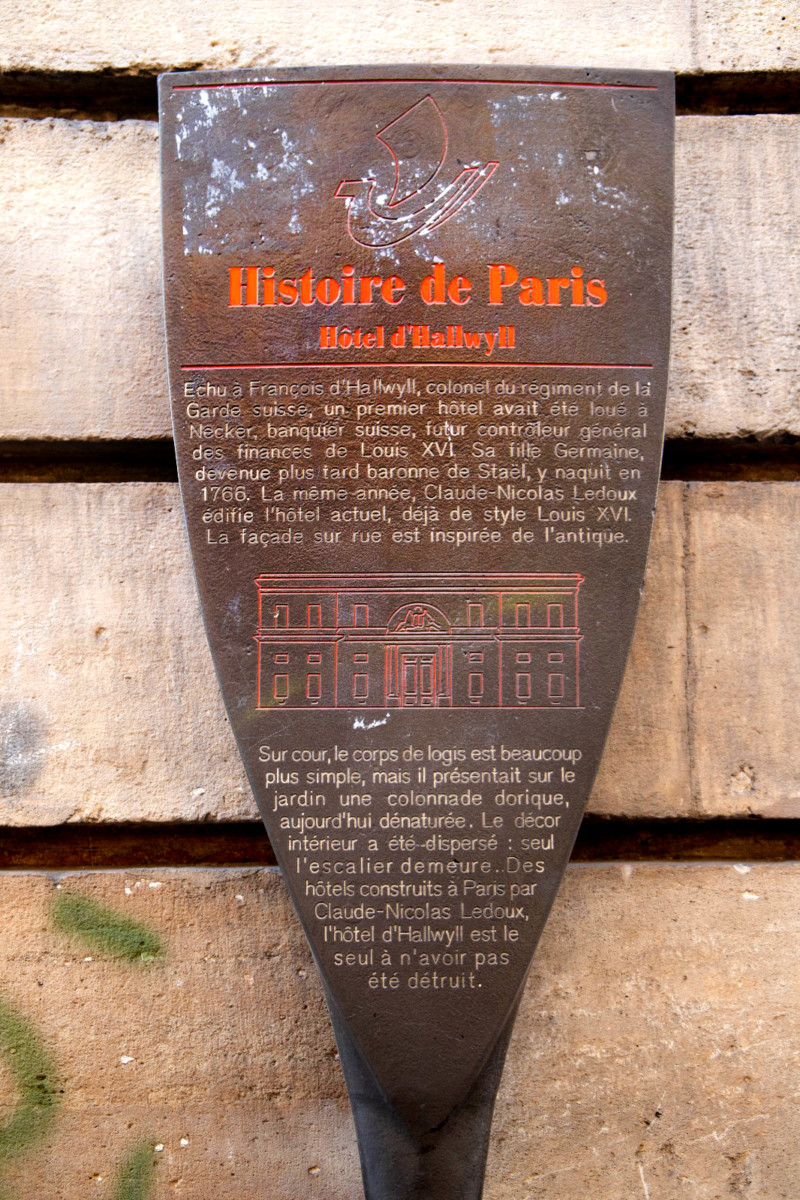
At 21, another train tells us that the mathematician, physicist and philosopher Jean Le Rond d'Alembert (round perhaps but certainly tall), the one of the encyclopedia, wore out his short pants in this street.
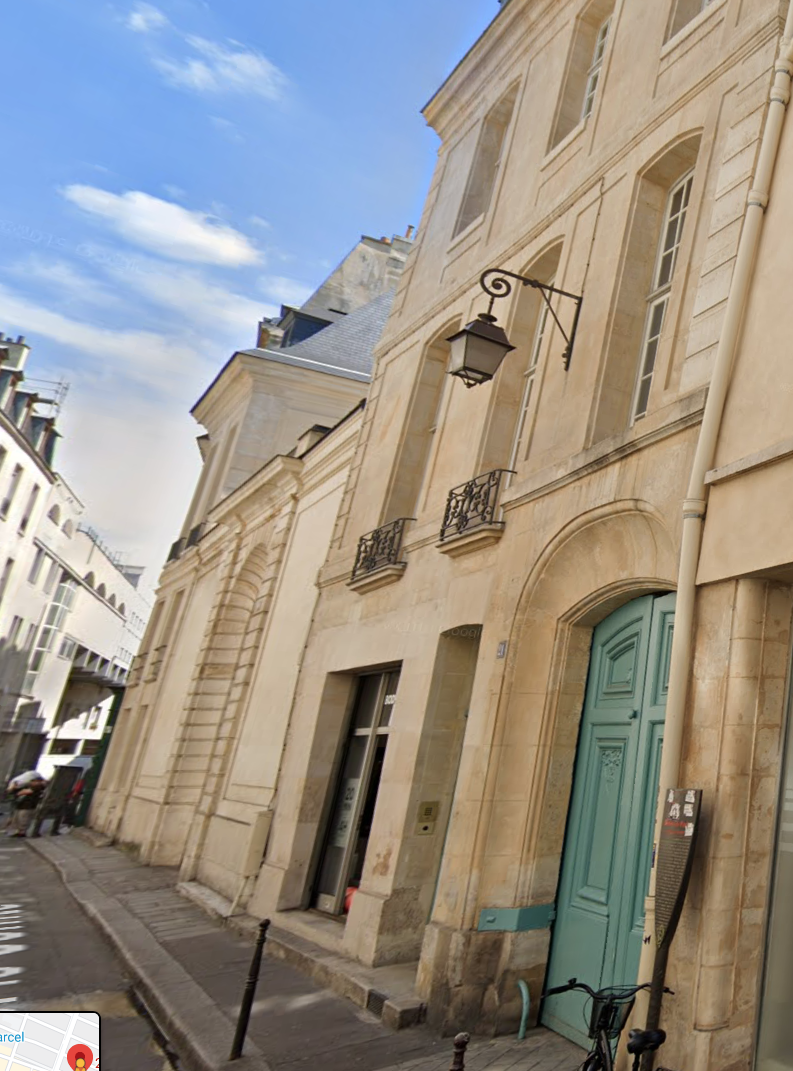
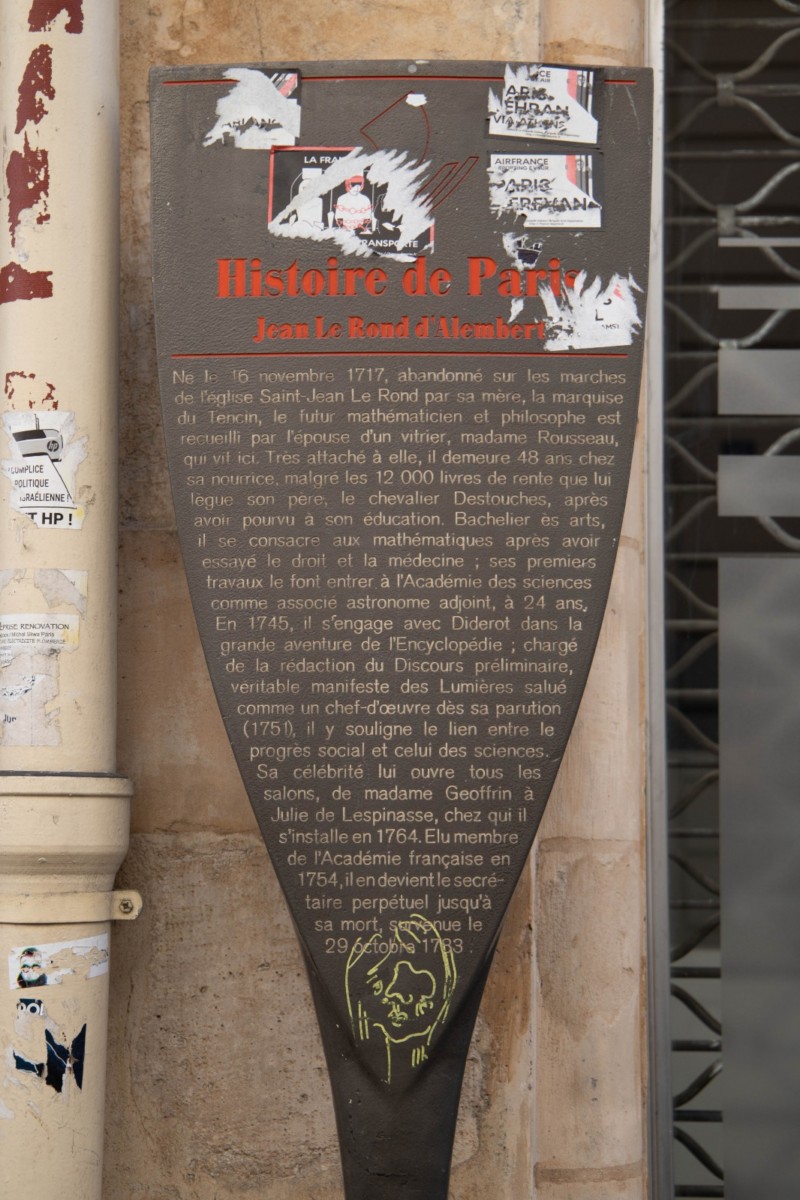
At 19 is the Beaubrun hotel, which we can think belonged to Henri de Beaubrun (1603-1677) or to his cousin Charles of the same name (1604-1692), but nothing attests to this, we are in artistic vagueness: these painters at the court of Louis XIII, then that of Louis XIV, worked together so closely that we cannot discern who did what. Don't they say that beautiful brown people are often dark and full of mysteries?
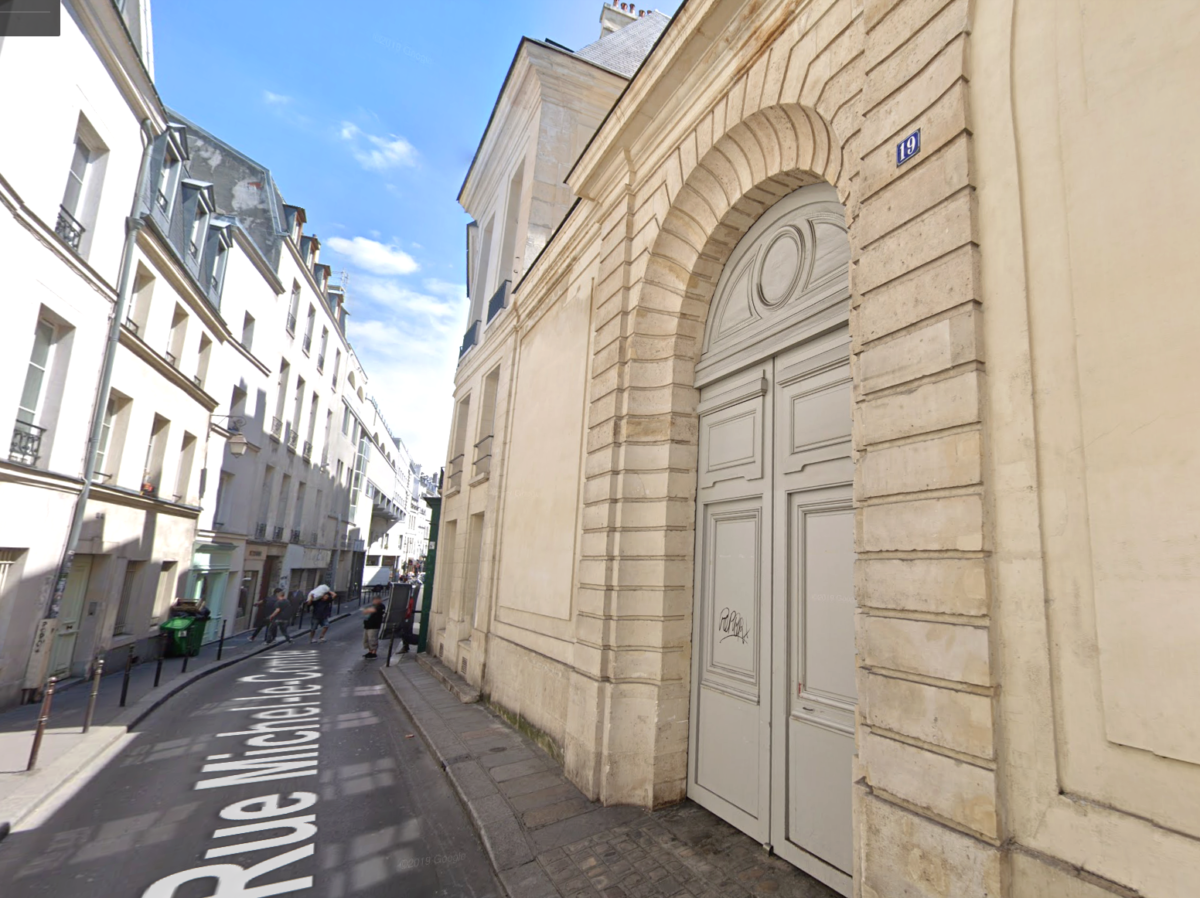
At 16, this modest red door is closed. Too bad: it seems to overlook a courtyard, where there is the oldest sundial in Paris, a well and a wrought iron staircase, surrounded by buildings dating from the XNUMXth to the XNUMXth century, the oldest being that of the former Auberge de l’Ours et du Lion!
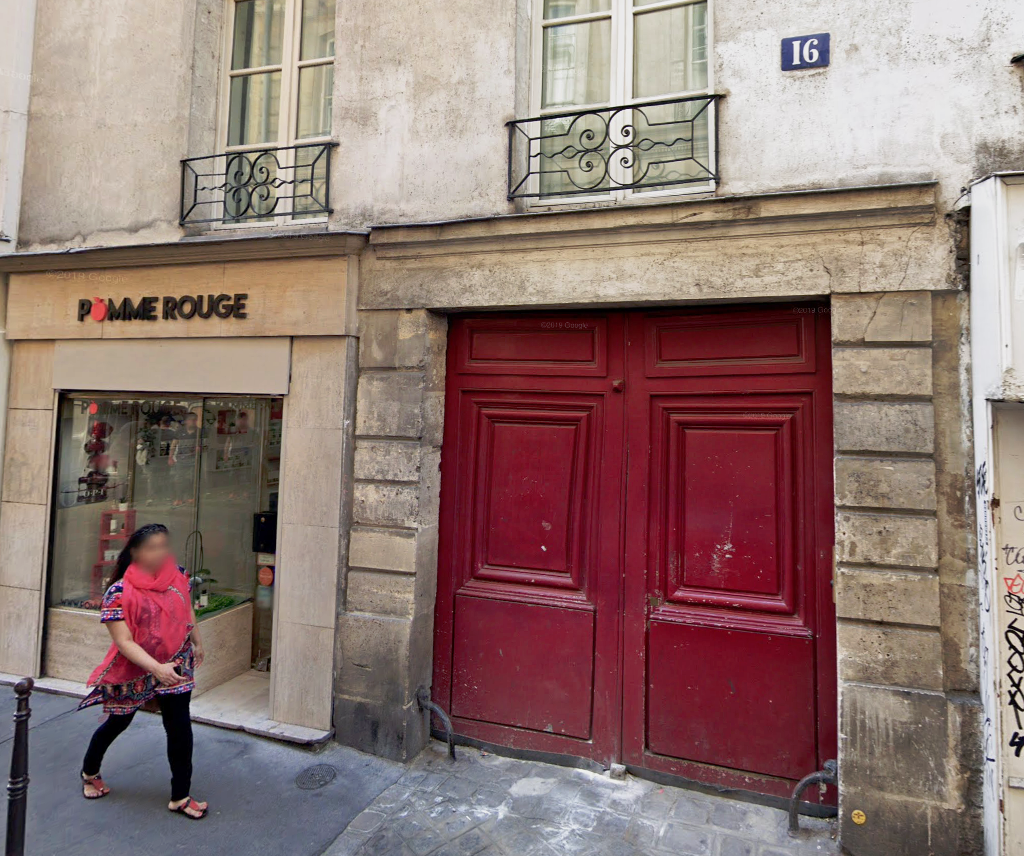
Right next door, another drinking establishment seems to have unfortunately been deserted by its customers, who probably preferred to go drinking elsewhere. Rue de Lappe, perhaps, on the Bastille side…
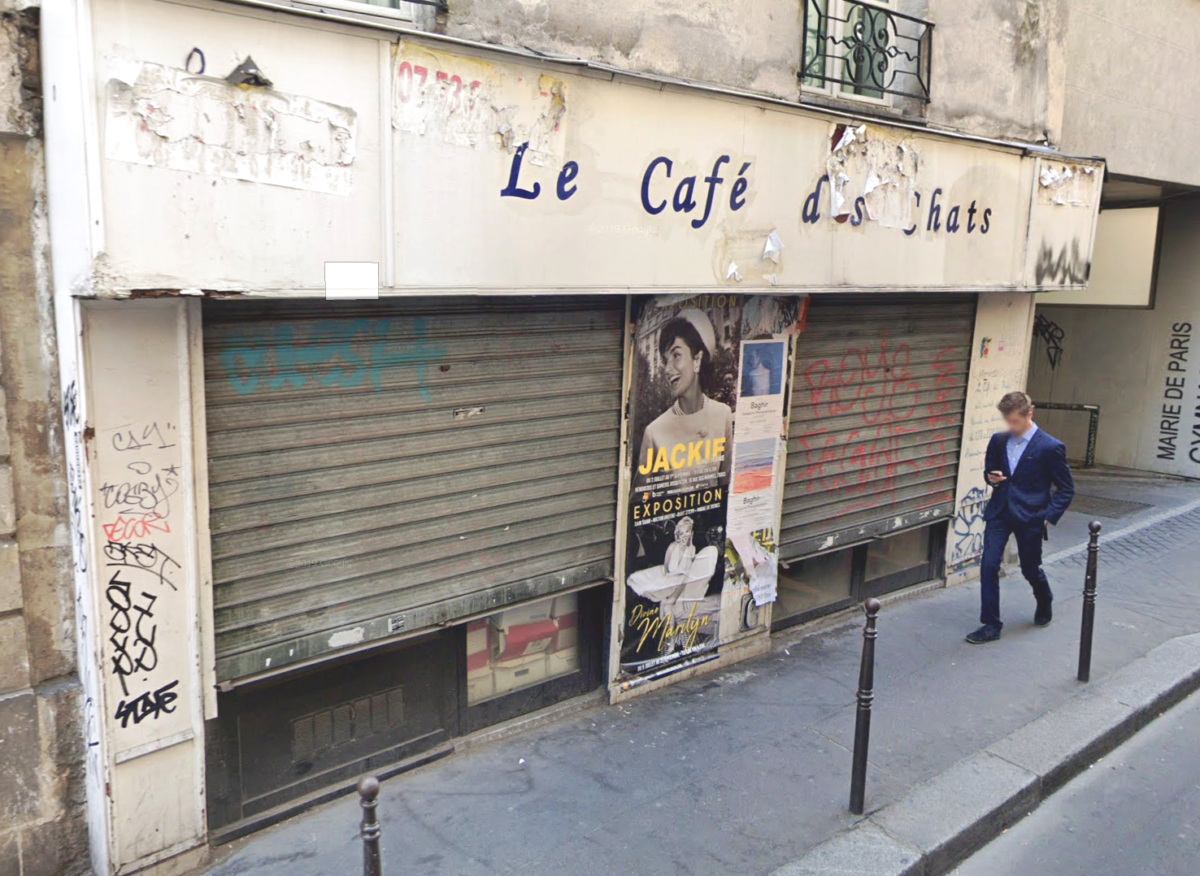
No. 7 belonged to Antoine-Louis Lefebvre de Caumartin who gave his name to half of that of the Havre-Caumartin metro station, which all Parisians know without, for the majority of them, knowing anything about this character . The Marquis de Saint-Ange, Count of Moret and Lord of Caumartin was intendant of the Trois-Évêchés and of the provinces of Flanders and Artois then provost of the merchants of Paris from 1778 to 1784. Given the modesty of the building, one can imagine that he bought it in his early youth, "Ideal first acquisition" as they say in the real estate world or although honest to the tips of his nails, he did not take advantage of his position as a senior clerk in the state to make a fortune.
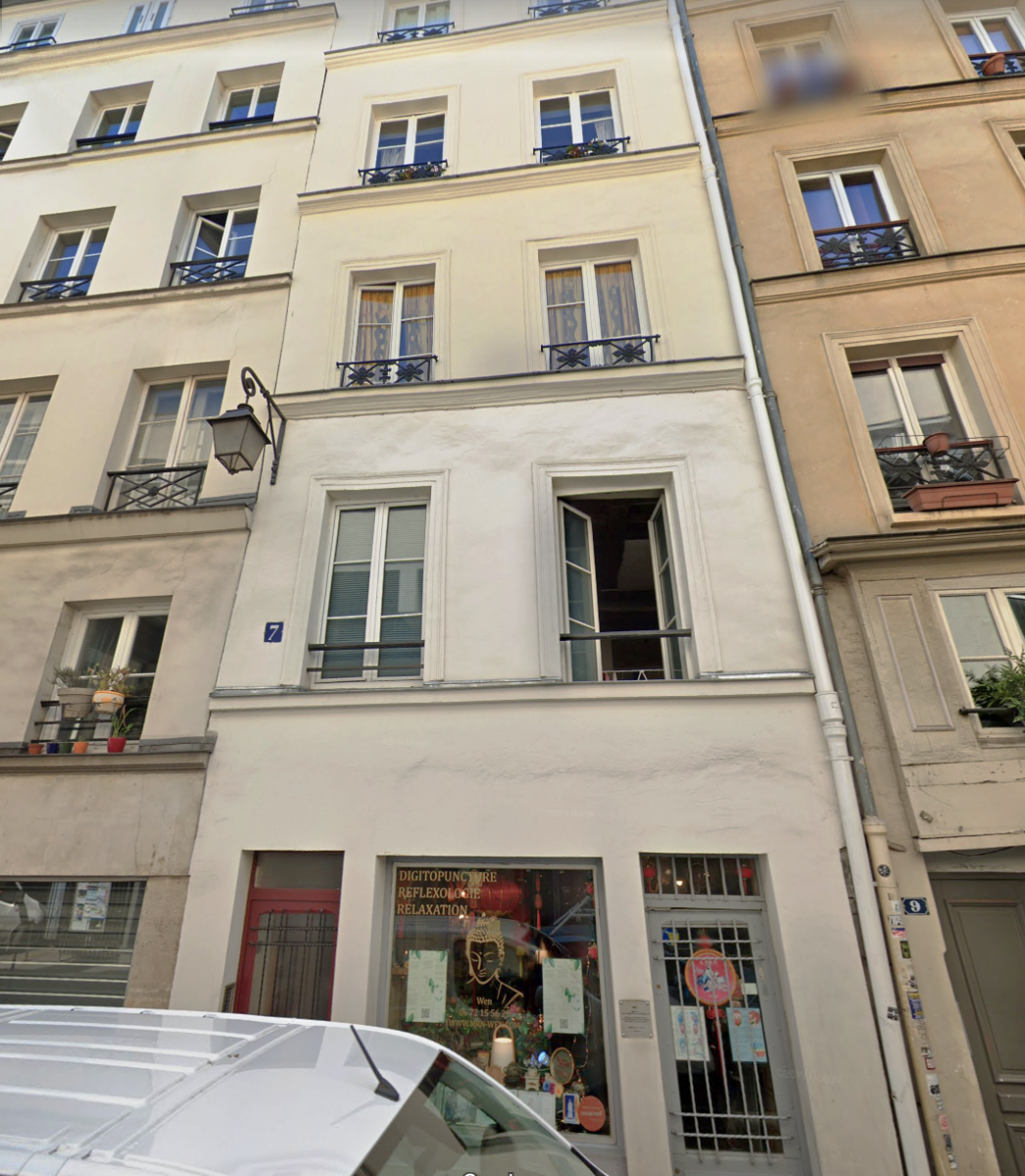
New astonishment when we understand that on the site of the following buildings stood a private mansion where Marie-Madeleine de Castille and Nicolas Fouquet, famous superintendent of finances, lived from 1651 to 1658. This private mansion belonged until in 1624 to the Montmorency family. Obviously, this island must have undergone major changes.
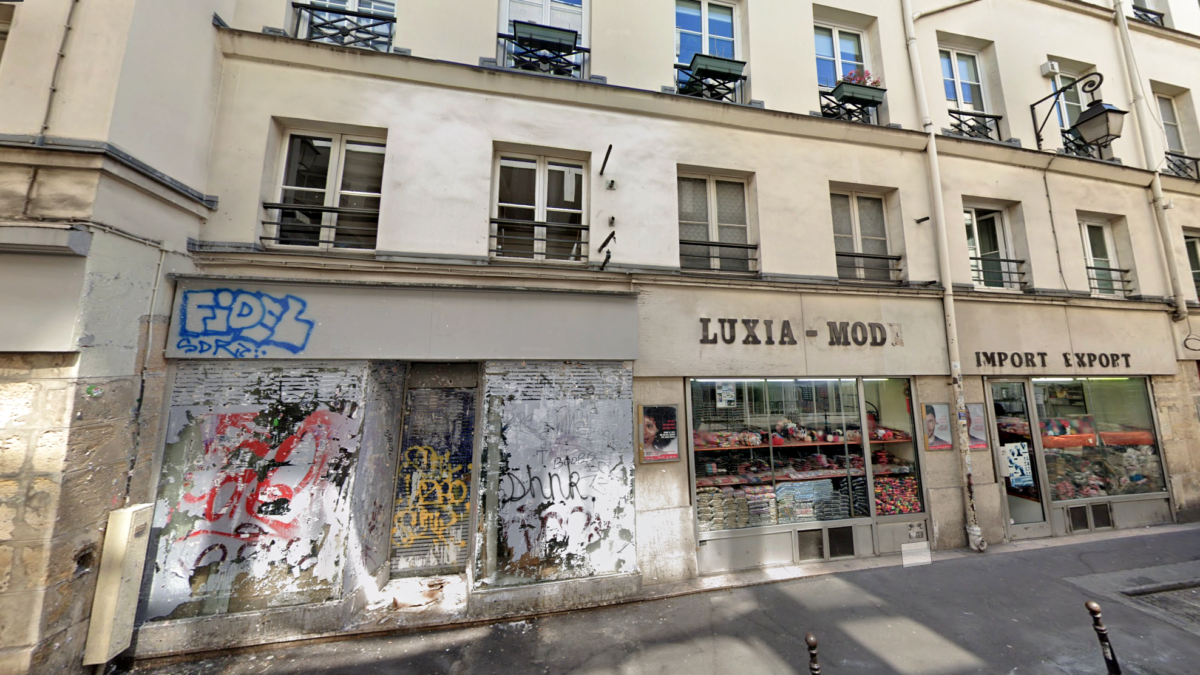
At the end, we arrive at the intersection with rue du Temple.
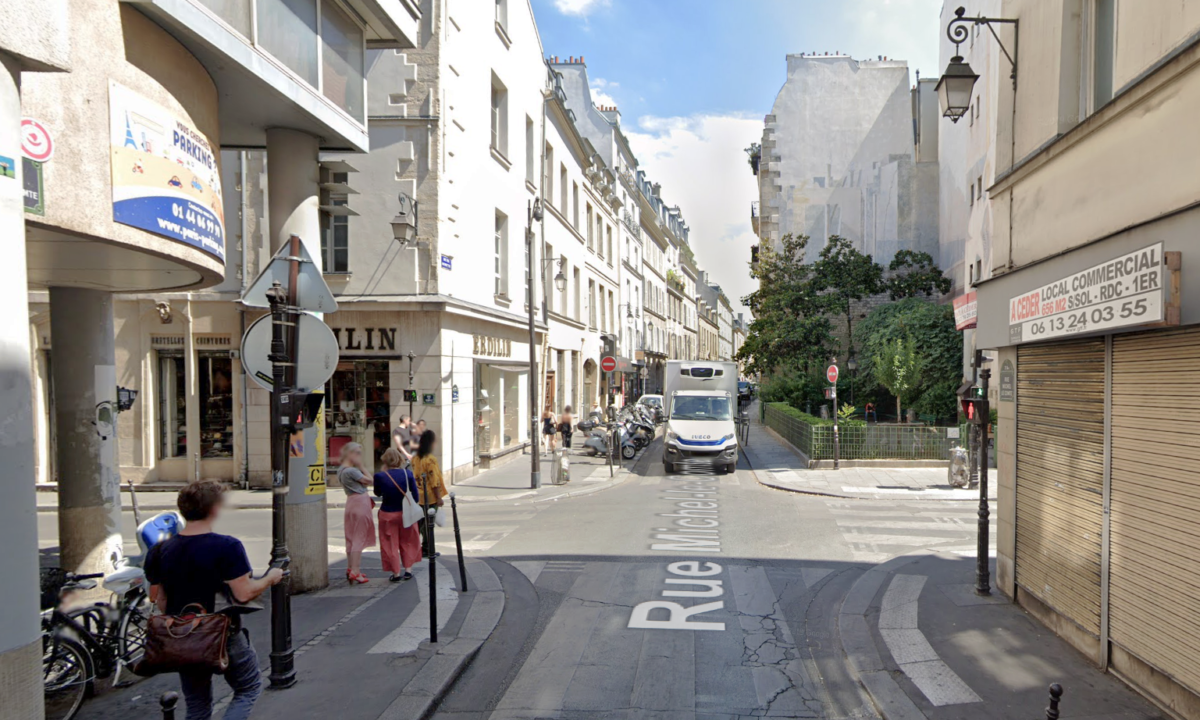
We enter rue des Haudriettes. It was formerly called rue de L'Échelle-du-Temple, because of a sinister ladder, a kind of pillory or yoke, which was there. The condemned, to access the floor where he was exposed to the jeers of the public, had to take a ladder, hence the name. At the time of Mazarin, some young lords, excited by a few shots, burned while singing this instrument. The cardinal reinstated it immediately, and made his displeasure known to them: “Gentlemen, if such a scandal is repeated, you will first pay the costs of rebuilding the ladder, and then you will release it.” We bet it cools them down.
These events took place on the site of the current square Renée Vivien, whose real name was Pauline Mary Tarn, nicknamed “Sapho 1900”, a French-speaking British poet. It is probably the smallest square in the capital.
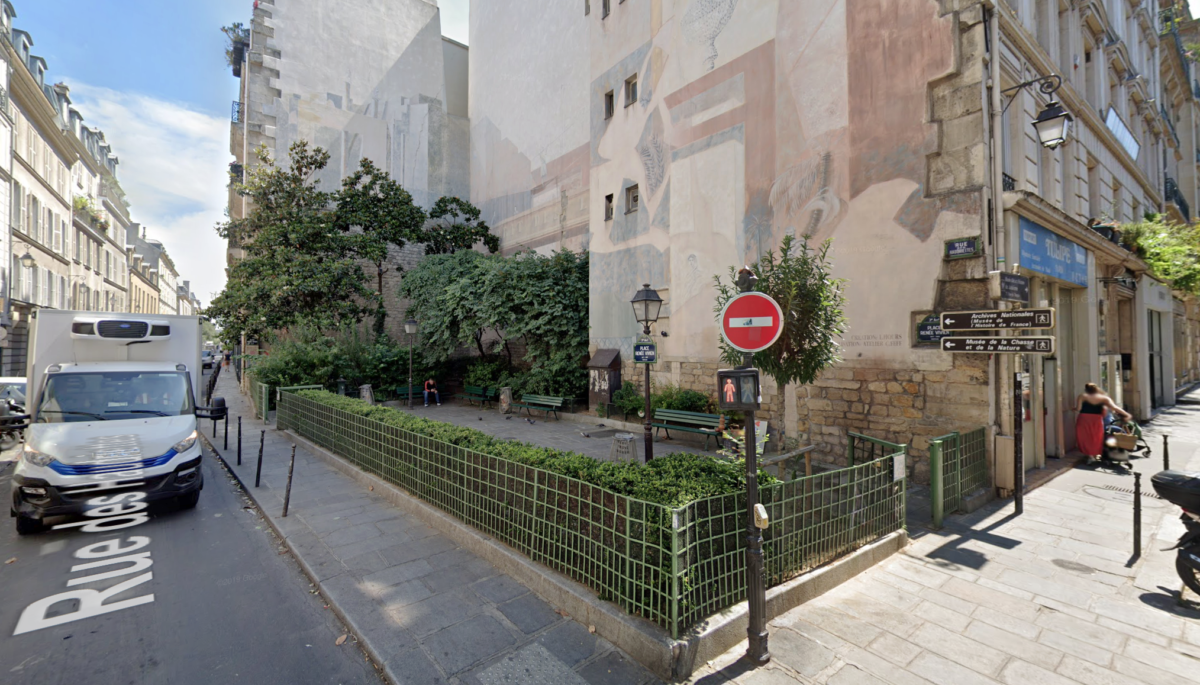
Let's go back to the origin of the name of this street. Étienne Haudry, great panetier (head of the catering service) of Philippe le Bel, went on a pilgrimage to Santiago de Compostela. His wife Jeanne, believing him to be dead for an unknown reason, brought together several pious women at her home, with whom she took a vow of chastity and to devote her religious life to the service of the poor.
When Stephen returned in 1329 and in good health, he obtained that his wife be dispensed from her vow, on condition that her pious association could continue. To thank him, these nuns took the name “Haudriettes”. A bit like Cloclo and his Clodettes in a way.
At numbers 4 and 6 is the Bondeville mansion. There is nothing special to say about this hotel except that it belonged to Thomas Raponel, lord of Bondeville.
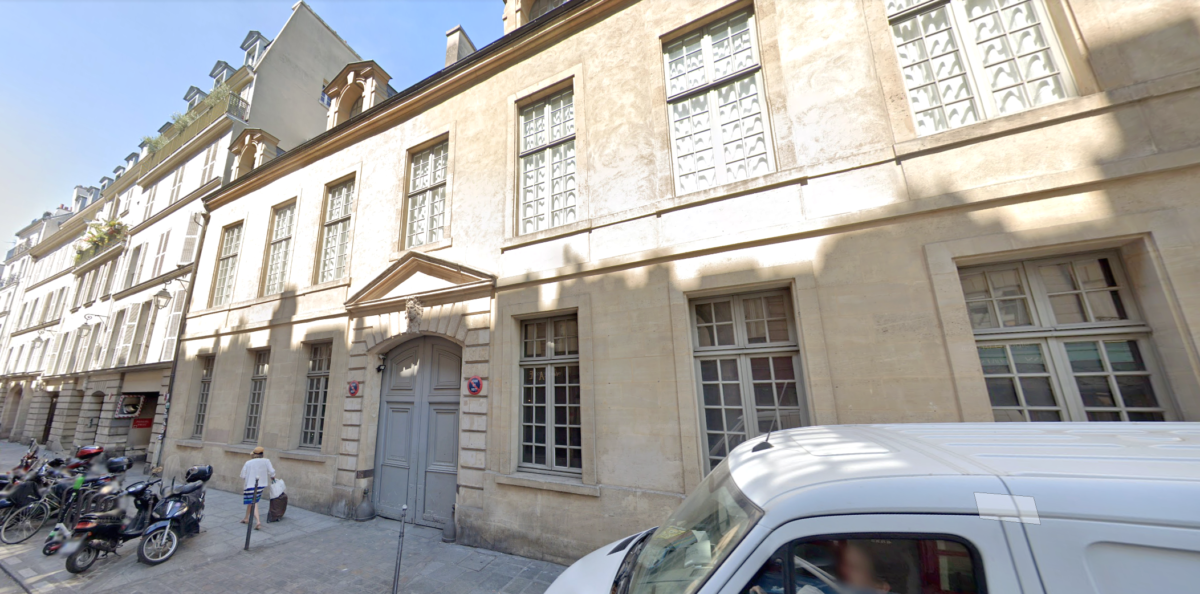
Arriving at the intersection of rue des archives, we turn around to admire the small square newly named Patrice Chéreau and the Haudriettes fountain, dating from 1764, which stands there.
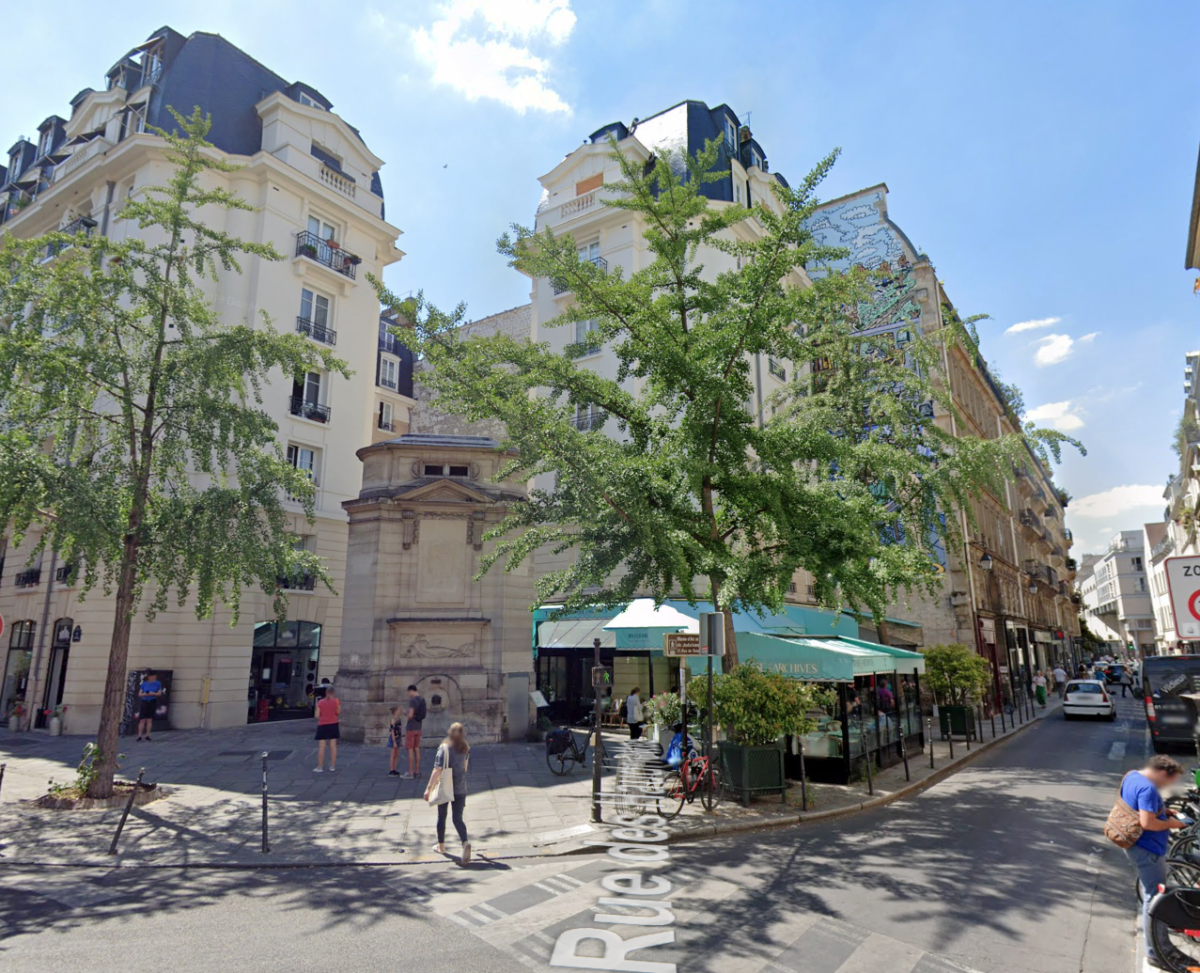
Let's cross and enter Rue des Quatre-Fils. Le Marais Mood has already devoted an article to these characters, it's here.
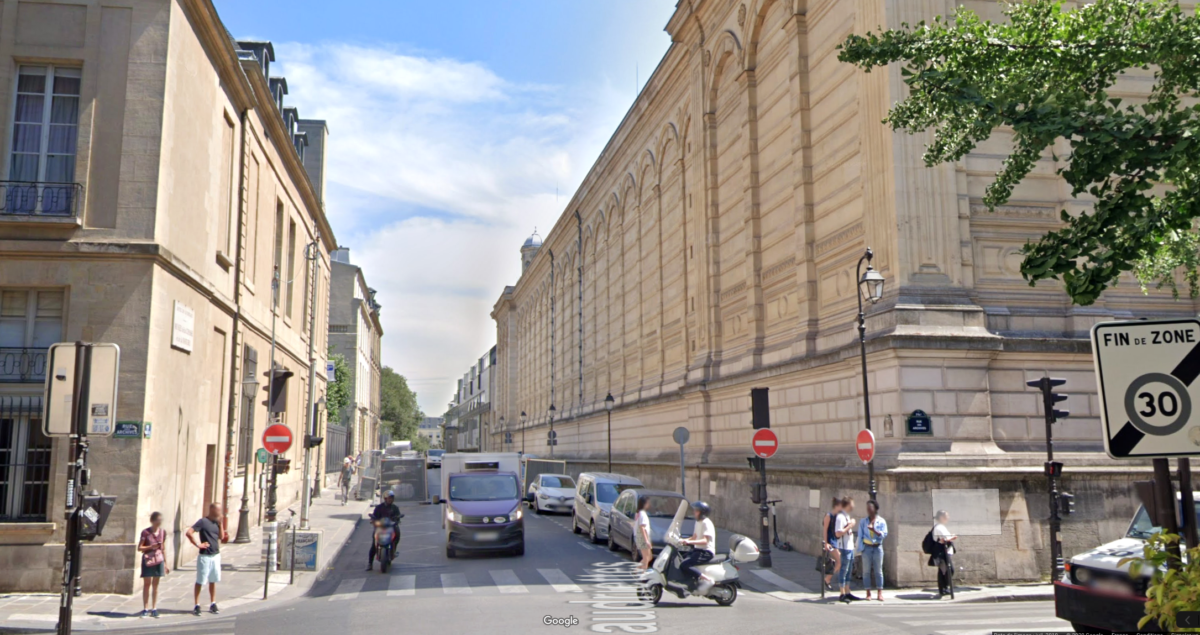
The south side of this street is entirely occupied by the buildings of the National Archives. Google Street View allowing bold framing, the image below shows the large depots built under Napoleon III in their entirety. Followed by the National Archives Reception and Research Center (CARAN), built in 1987 to the plans of the architect Stanislas Fiszer, then the outbuildings of the Hôtel de Rohan.
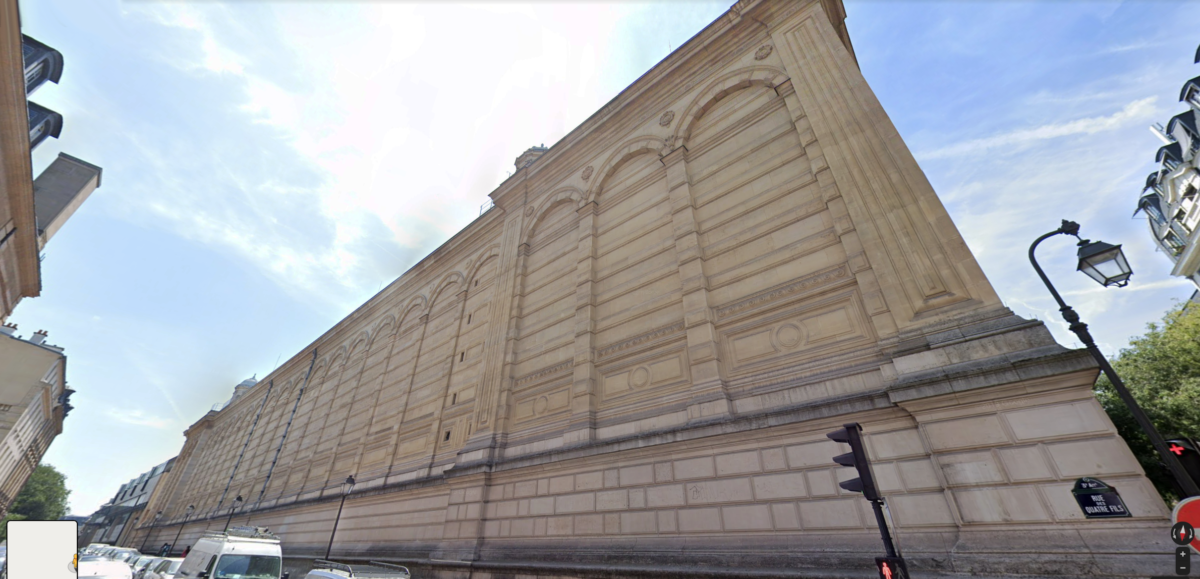
Opposite is the Guénégaud hotel, which houses the hunting and nature museum. We will wait until our footsteps take us one day on rue des Archives in front of the front door of this building to tell you more.
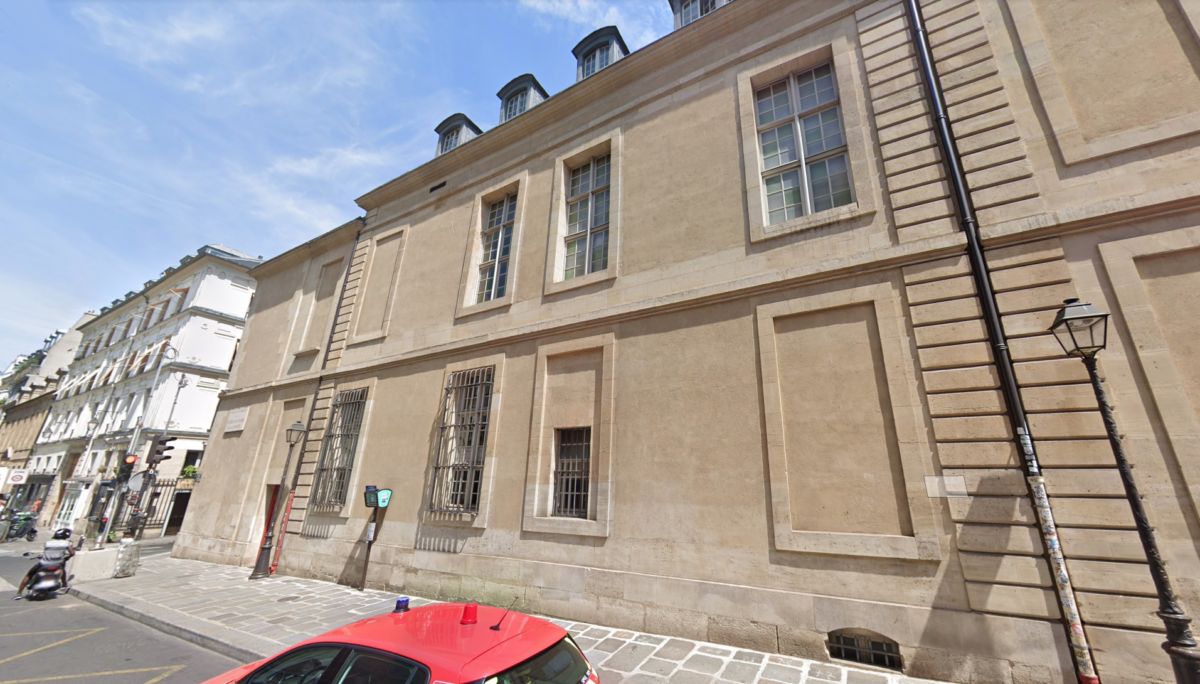
At No. 22 we find the Thirioux d'Arconville hotel built in 1766-1767 on part of the former garden of the Guénégaud hotel located at 60, rue des Archives.
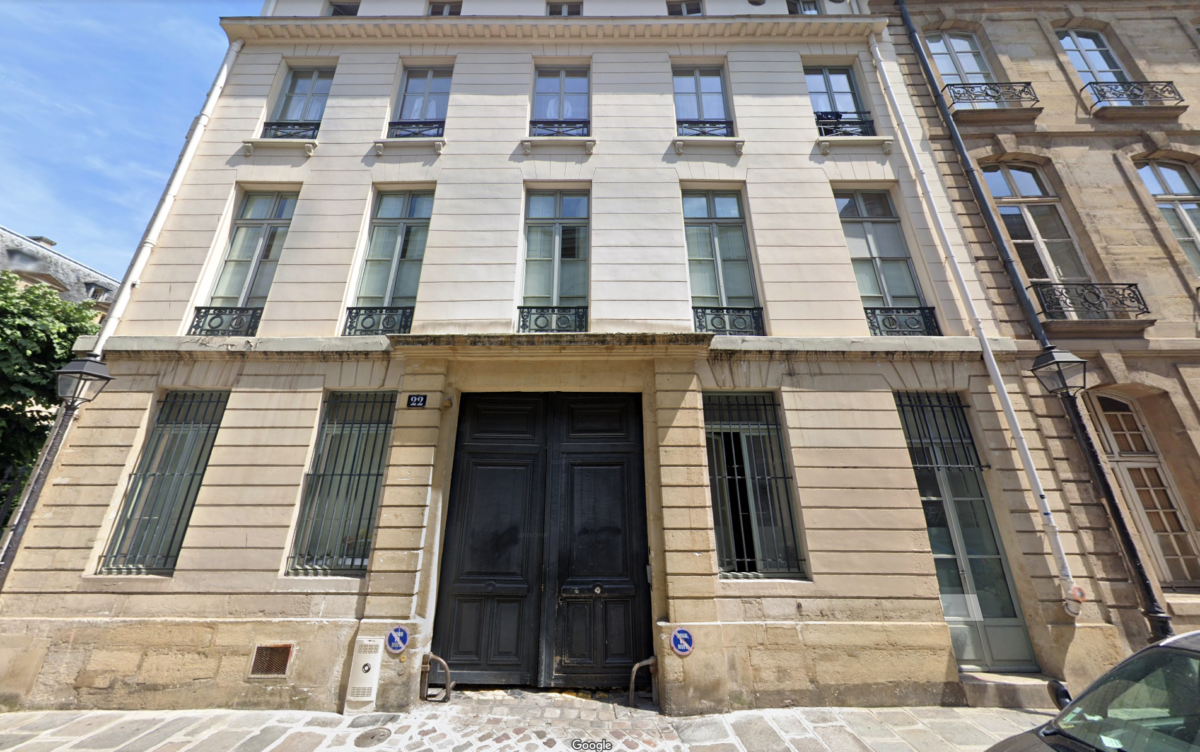
At number 20 follows the private mansion where Raymond de Sèze lived, who was the main defender of Louis XVI, as his name seemed to predestine him there...
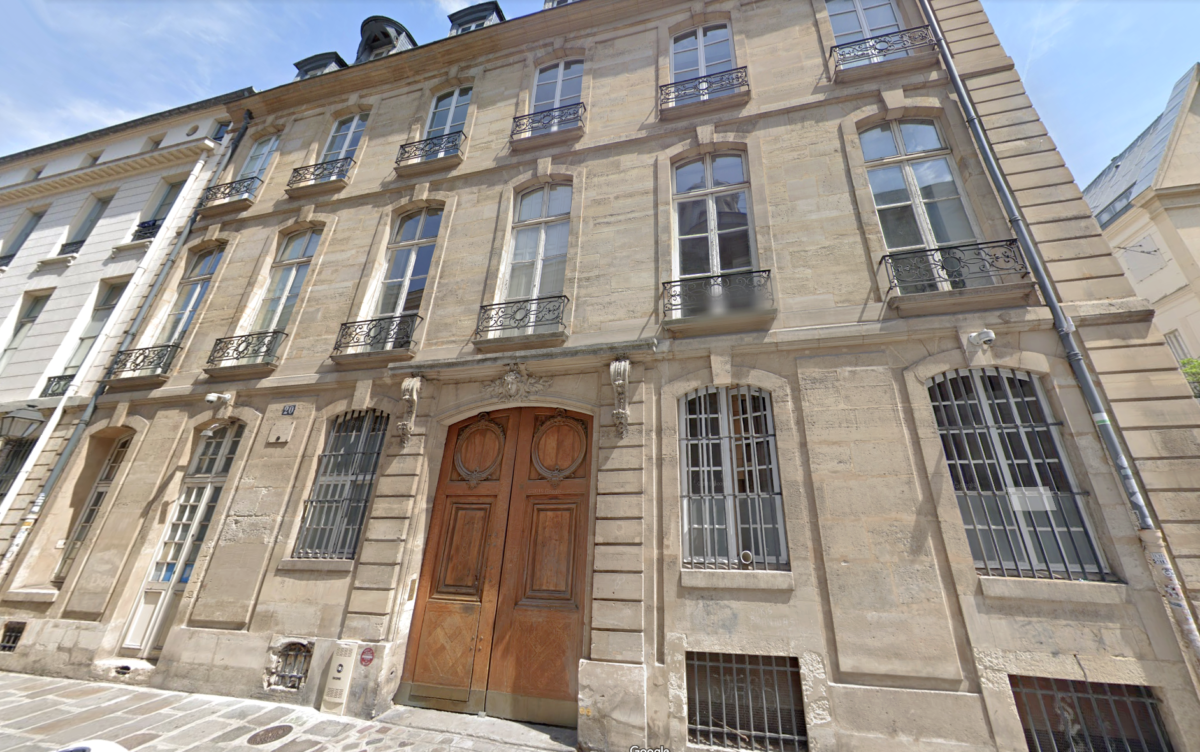
... a few meters further, at number 18, we contemplate the Le Rebours hotel built between 1624 and 1632. We notice a wall sundial which, at this time of the day, is in the shade, which prevents it from to fulfill its function well.
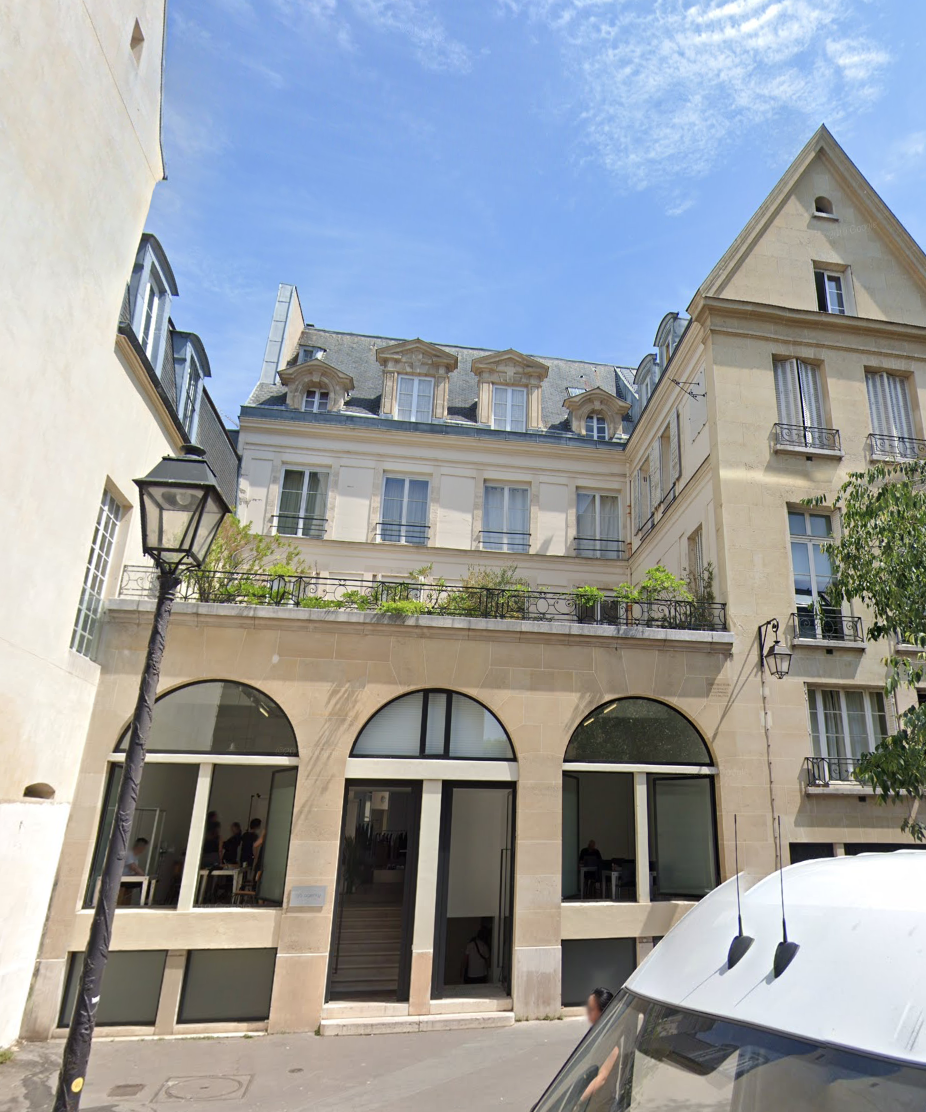
To finish this parade of beautiful buildings, here, at 16, is the Hôtel Aymeret built under Louis XII. This building was occupied by the offices of the Parisian Bazar or Annuaire raisonné of the industry of the first artists and manufacturers of Paris, of which here is an extract, taken at random from the 1822 edition: “Autellet, Arquebusier, rue Michel-le-Comte , n°10. Patented by his Royal Highness, the Duke of Angoulême, and successor to Mr. Fillon and Mr. Langumier, arquebusiers of the King. M Autellet works with the same care as his predecessors: he also advantageously maintains a reputation deserved by long work: this house is, in fact, of its type, one of the oldest that we can cite. For your information, the Public Finance Center is currently located at the address given.
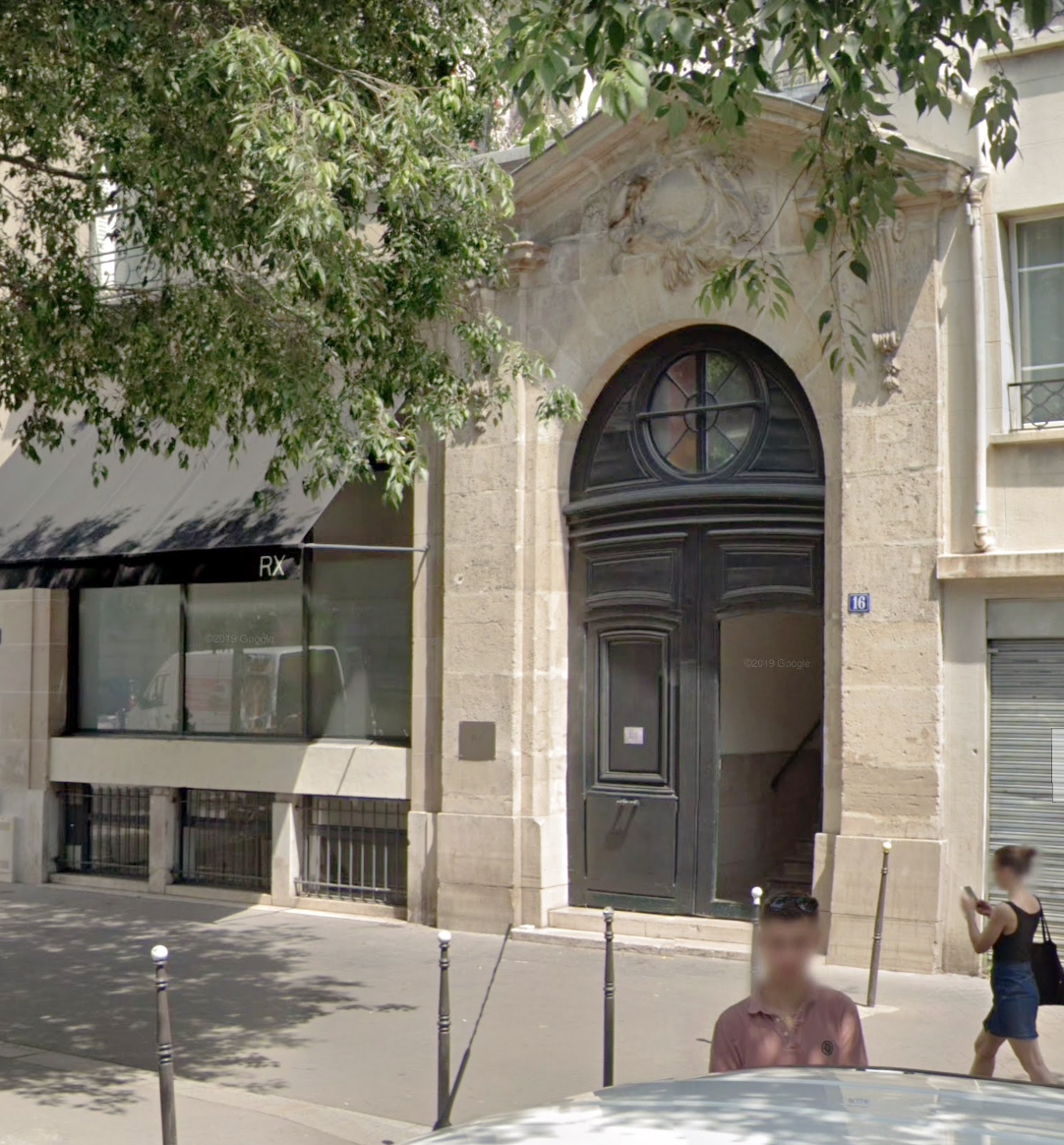
Opposite, the National Archives Reception and Research Center (CARAN), built in 1987 with the aim of increasing the surface area for consulting documents in the face of increasing demand.
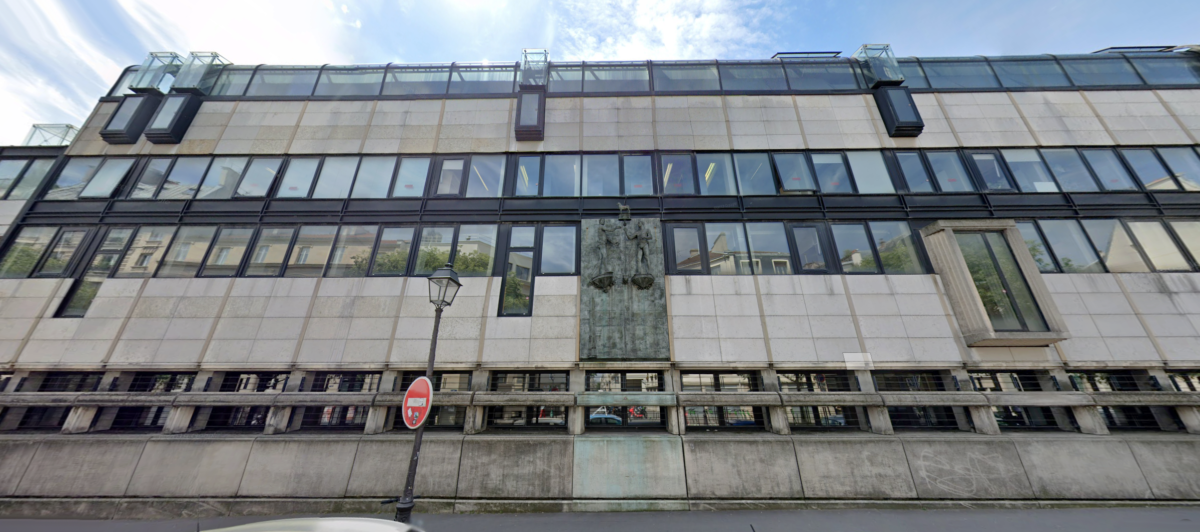
On the facade, in the axis of rue Charlot, Ivan Theimer designed the bronze relief of the Four Sons Aymon. At first glance, there are only two, one seeming to say to the other “give me the horse”. The other two are in the background, as sketched. A little touch of Kärcher would surely make them reappear in the eyes of walkers.
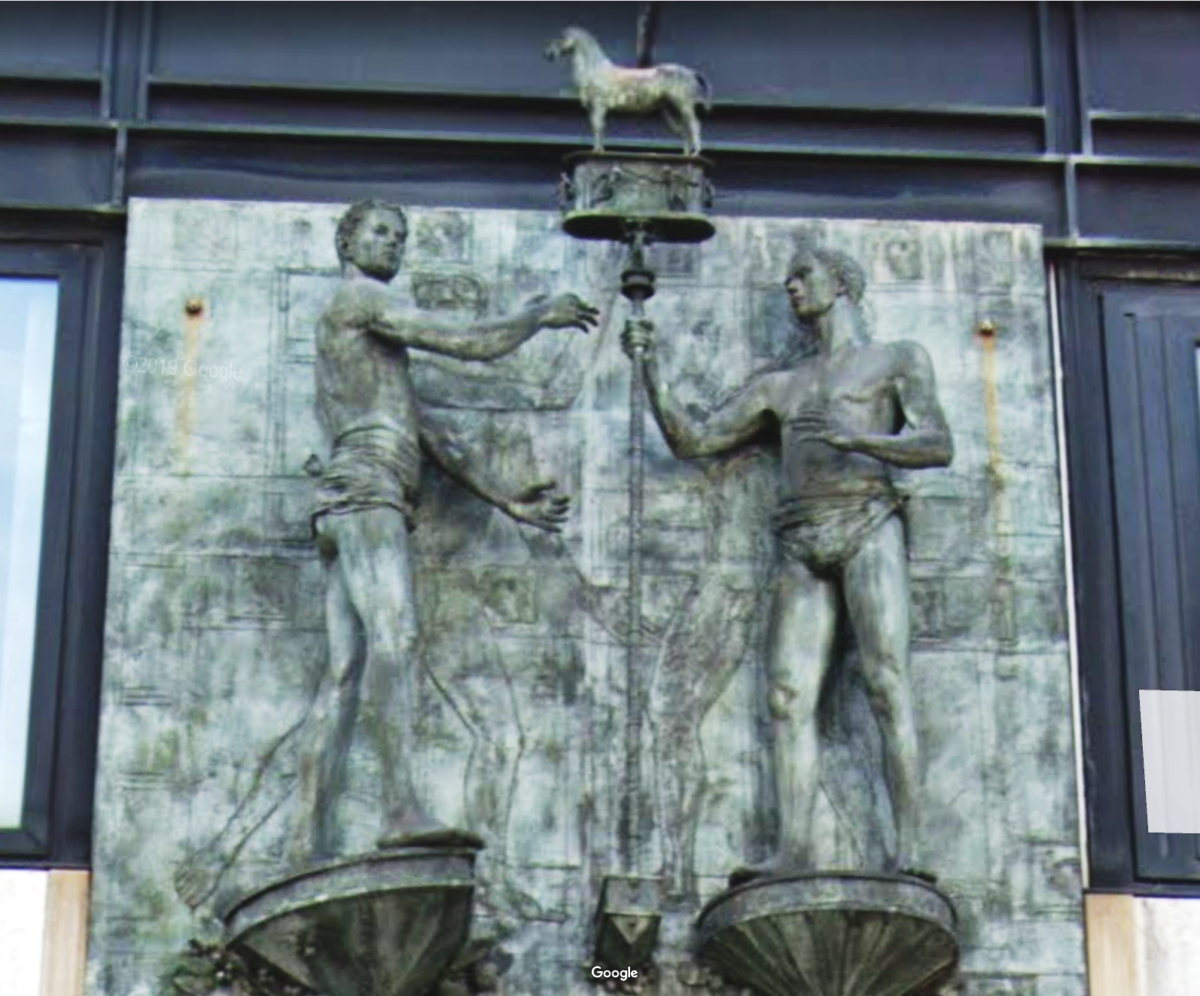
On the sidewalk opposite, a line of signs reminds us that we are in the European election period. Hugo Boss' campaign budget seems much larger than that of Nathalie Loiseau.
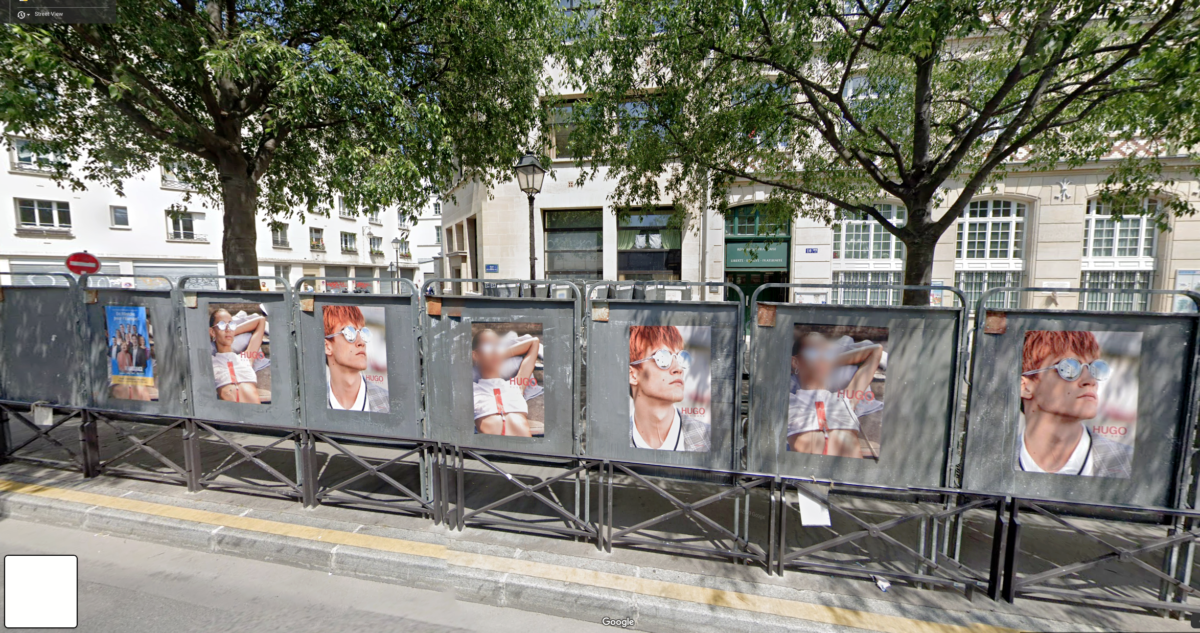
Finally, continuing on from CARAN, here is the Hôtel de Rohan, which was the property of four successive cardinals and bishops of Strasbourg. The most famous of them remains Louis-René-Edouard de Rohan, involved in the dark “affair of the queen's necklace” and arrested in 1785. Imprisoned, he was finally acquitted by the Parliament of Paris, which condemned the Countess of La Motte, the real instigator of the conspiracy. These venerable walls today house the technical equipment of all the national archives: photographic and microfilming workshops.
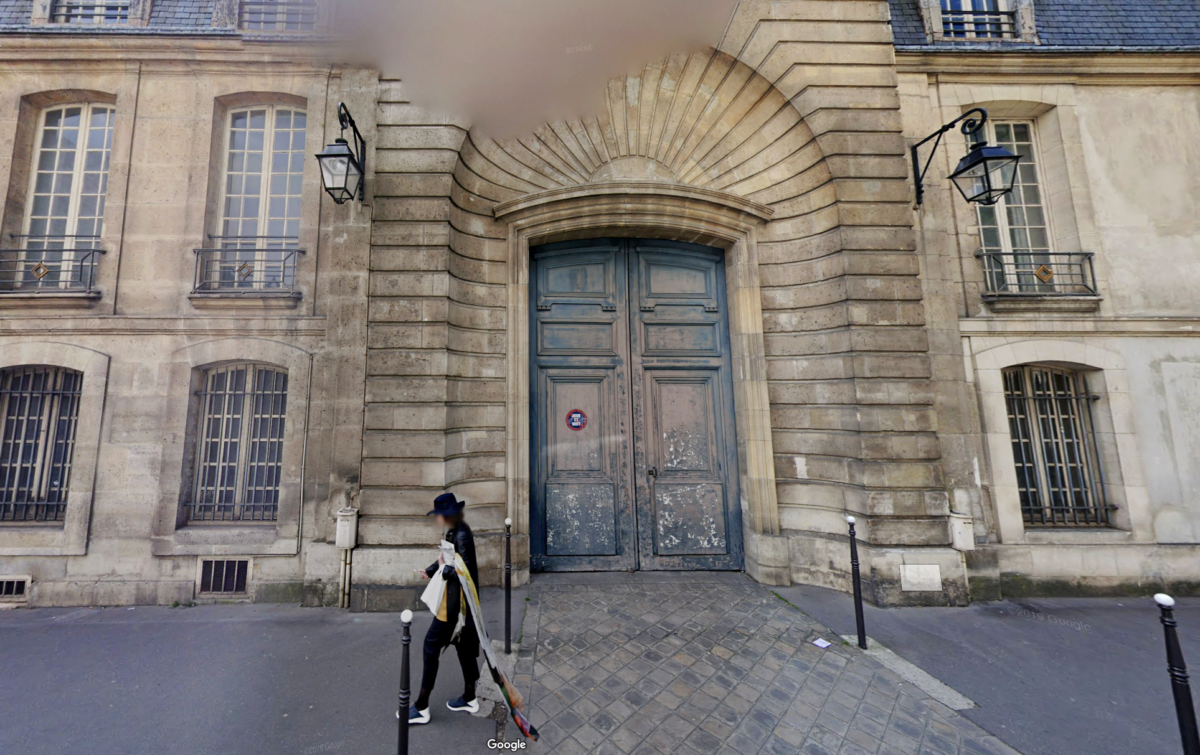
Text: Djiefsi
01.06.20
FOR PASSIONATES OFUS
Juliette Drouet actress, muse and mistress of Victor Hugo
At 14 rue Sainte-Anastase, from 1836 to 45 and at 12 from 1845 to 48, a few hundred meters from Place des Vosges, lived the muse and lover of Victor Hugo, Juliette Drouet née Julienne Gauvain.
Rue Vieille-du-Temple: the fabulous construction site restarts
A luxury hotel will be created at the end of the work. On the ground floor, the old stables and carriage houses will house the restaurant on the large courtyard, while the first courtyard, on rue Vieille-du-Temple, will feature two businesses continuing its 19th century layout.
The Marais festival, a fabulous story
The Festival du Marais dates back to a time that those under 60 cannot know. However, this leading artistic event was for a long time one of the most popular cultural events in the capital. For a quarter of a century, from 1962 to 1987, this unique festival…
NOW ON THE MOOD MARSH
The best tattoo parlors in Marais
Tattooing, an age-old practice, has long been the prerogative of convicts, dock workers, the underworld and sailors. Although it has become democratized, now affecting all profiles and concerning one in five French people, including 16% women compared to 10% men, it still remains taboo due to its definitive and transgressive nature.
Juliette Drouet actress, muse and mistress of Victor Hugo
At 14 rue Sainte-Anastase, from 1836 to 45 and at 12 from 1845 to 48, a few hundred meters from Place des Vosges, lived the muse and lover of Victor Hugo, Juliette Drouet née Julienne Gauvain.
Piccola Mia, the pizzas of the Republic
On the Place de la République, a brasserie with Italian accents has just opened, which quickly made people forget the old Pizza Pino. Welcome to Piccola Mia, the fruit of the joyful encounter between Italian chef Denny Imbroisi, pizza chef Julien Serri and mixologist Matthias Giroud who creates a creative cocktail menu.

